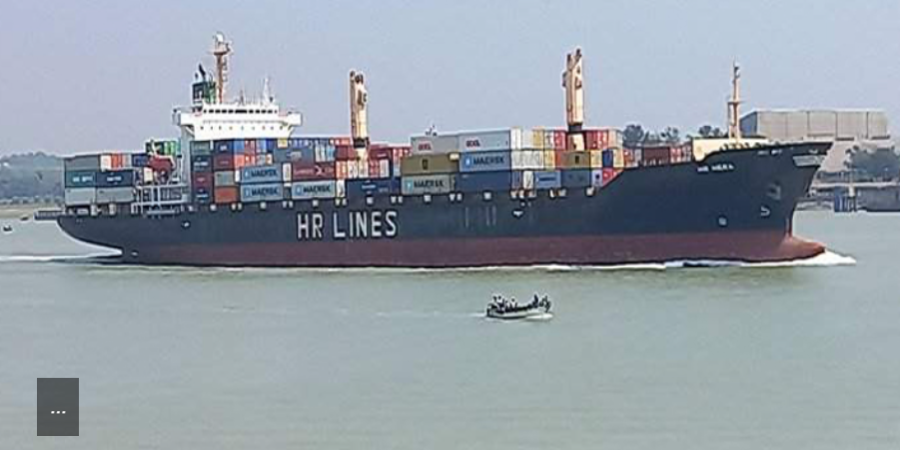
ছবি: Photo: Collected
Chattogram Port Authority has embarked on a mission to encourage shipping agents to transport goods using larger vessels, significantly reducing time, cost, and operational risks for importers and exporters. The strategic use of port channels, jetties, berths, equipment, and yards is contributing to the country’s economic progress and saving foreign exchange.
Currently, 98 container ships under various international flags are permitted to operate at Chattogram Port. Previously, vessels with a capacity of 1,500 to 1,800 TEUs (Twenty-foot Equivalent Units) were common. Now, at least 10 ships with a capacity of 2,000 to 2,200 TEUs regularly dock at the port, along with vessels carrying up to 2,500 TEUs.
In 2024, Chattogram Port handled 3.27 million TEUs of containers and 123 million metric tons of cargo. This marks a growth of 7.42% in container handling and 3.11% in cargo handling compared to 2023. Notably, these records were achieved with 3,867 vessels, 236 fewer than the 4,103 vessels handled in 2023. Officials attribute this to the increasing use of larger ships.
A senior port official explained that both large and small vessels require experienced pilots and tugboats to navigate the Karnaphuli River safely. However, large ships reduce the number of trips needed, requiring fewer pilots, tugs, and berths. This results in cost savings for shipping, including reduced demurrage.
Recognizing the benefits, the state-owned Bangladesh Shipping Corporation has also invested in larger vessels capable of transcontinental voyages. Of these, at least three vessels are yet to arrive in Bangladeshi waters.
According to Syed Mohammad Arif, Chairman of the Bangladesh Shipping Agents Association, the port has gradually increased the permissible vessel length and draft over the years. Initially limited to ships of 186 meters in length, the port now allows vessels up to 200 meters with drafts of 10 meters. As a result, cargo that previously required four smaller ships can now be transported by two or three larger vessels, significantly reducing costs and operational delays.
He added that the shift to larger vessels minimizes wait times at outer anchorage and optimizes berth usage. Efficient management of gearless and geared vessels at the port’s world-class terminals ensures rapid loading and unloading of containers, further enhancing efficiency.
Port modernization has been a continuous effort since 1975. Over the decades, the permissible length and draft of vessels have been progressively increased. A milestone was achieved on January 16, 2023, when a 200-meter-long ship with a 10-meter draft, the Common Atlas flying the Marshall Islands flag, successfully berthed at the main jetty.
Rear Admiral SM Moinuruzzaman, Chairman of the Chattogram Port Authority, highlighted ongoing initiatives to enhance capacity. These include the construction of a heavy lift cargo jetty at Laldia and measures to ensure the efficient handling of larger vessels. The average waiting time at outer anchorage has been reduced to one day, streamlining operations further.
The port’s Secretary, Md. Omar Faruq, emphasized that collaboration among various stakeholders, including government agencies, customs, shipping agents, and trade organizations, has been pivotal in modernizing the port. Encouraging larger vessels is a key part of this strategy, enabling greater efficiency with fewer ships.
Additionally, port authorities are focused on ensuring vessels depart with full capacity loads. Previously, vessels with a capacity of 2,000 TEUs often left with only 800 TEUs. This gap has now been minimized.
To accommodate growing volumes, the Chattogram Port Authority has proposed allowing off-dock delivery of FCL (Full Container Load) containers, similar to practices at modern global ports. If approved by the National Board of Revenue, this initiative could boost container handling capacity by approximately 1 million TEUs and increase government revenue by BDT 2,000 crore annually.
As the port continues to adapt to global standards, its ability to handle larger vessels and greater volumes positions it as a key driver of Bangladesh’s economic growth.
repoter






